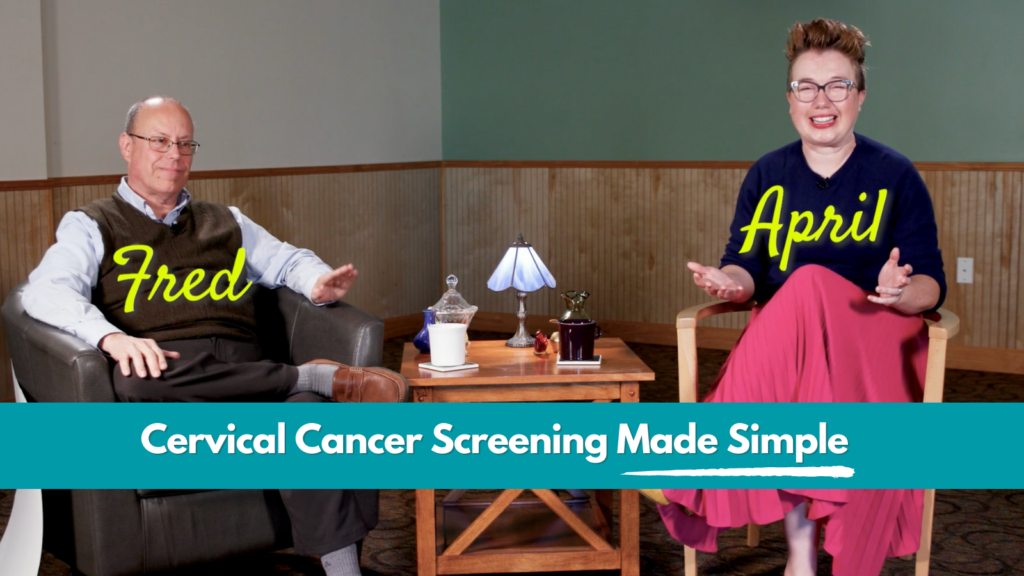Cervical Cancer Screening—An Interactive Journey
So you likely know that cervical cancer is preventable, and that regular screening can help find any problems that can be treated before they turn into cancer. But sorting through the different types of screening options and the different recommendations can be confusing. What types of options are available? When should screening start? Do you need a Pap test, an HPV test, or both? And how often do you need to be screened?
While it can seem complicated, Fred and April are here to break it down for you. You can go step by step through the different screening options as you choose, learning about each. In the end, Fred and April will help sort out which screening option is best.
Click on the image below to get started.
Learn More
- Understanding Cervical Cancer Prevention: This web-based activity (available in English and Spanish) has two tracks: one to cover the basics of cervical cancer screening and another for those with screening test results that require follow-up (like an abnormal Pap test). In just a few minutes you’ll learn about Pap and HPV tests, how often should you need to be screened, and what happens if a screening test is abnormal.
- Cervical Cancer Screening: Pap and HPV Tests: Here you will learn more about how these screening tests are performed, how to prepare for a Pap or HPV test, how to understand the results, and what additional tests or procedures might be needed after a abnormal result.
- HPV Vaccines: Screening is an important part of cervical cancer prevention, but it’s not the only one. HPV vaccines help prevent infection from both high-risk HPV types that can lead to cervical cancer and low risk types that cause genital warts.

